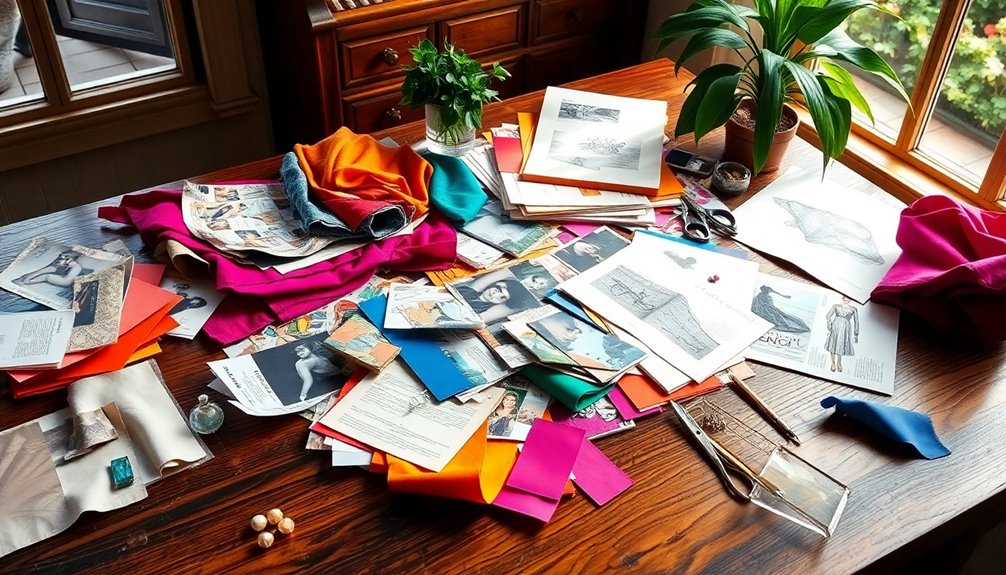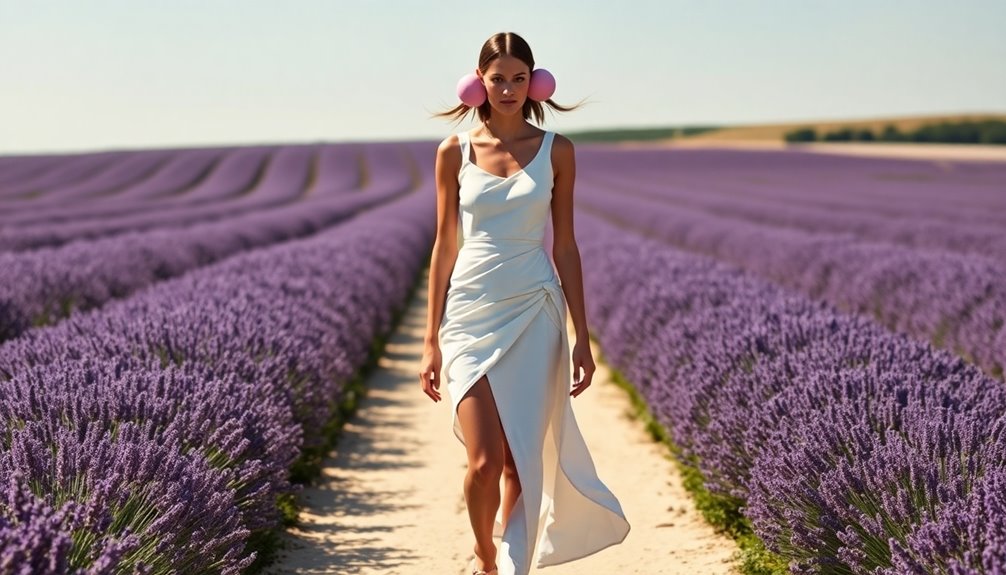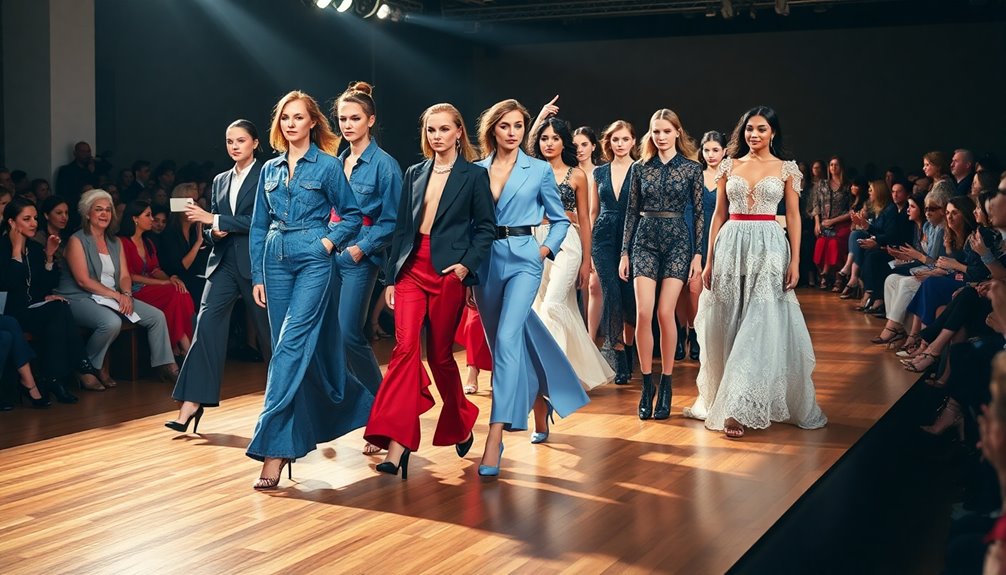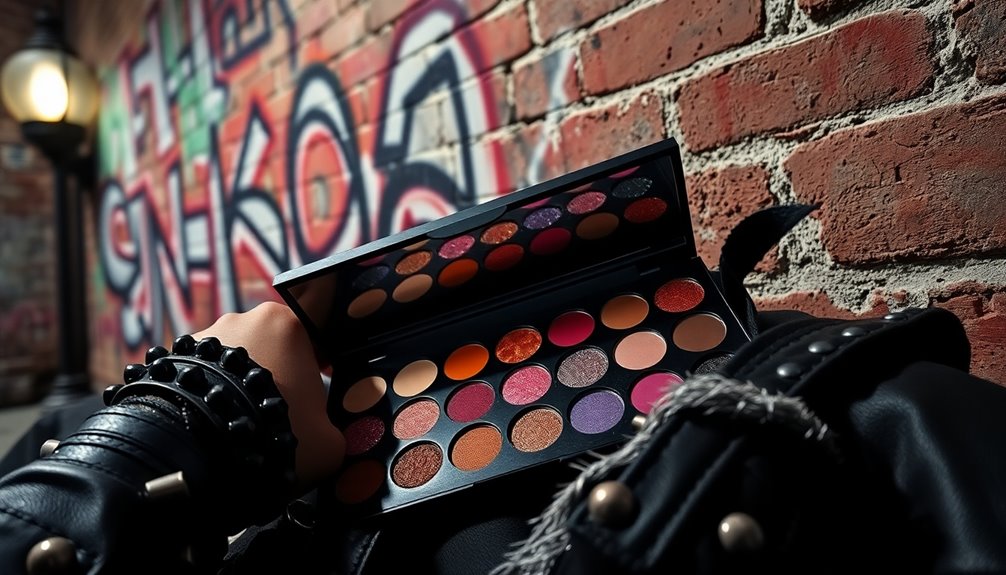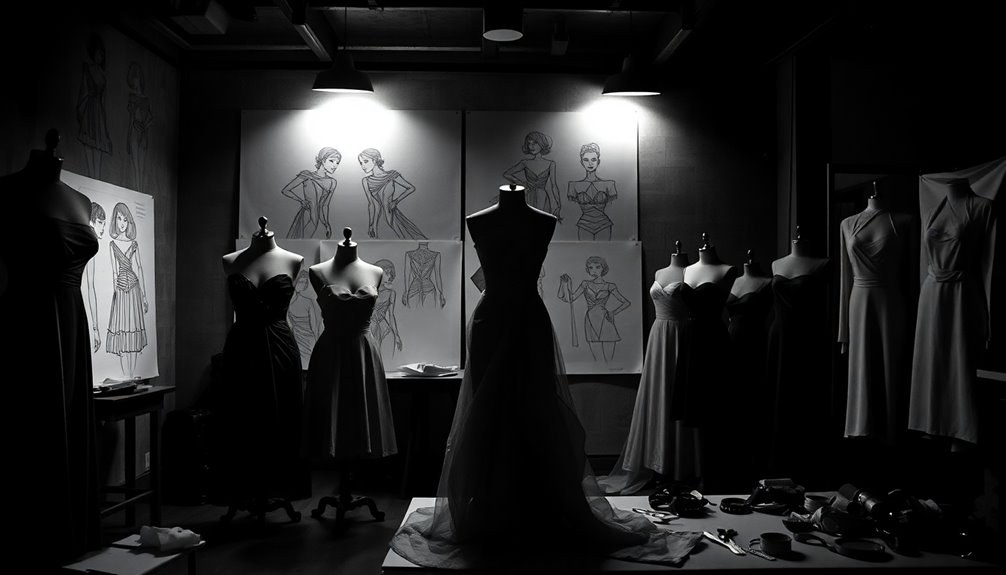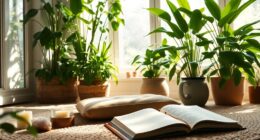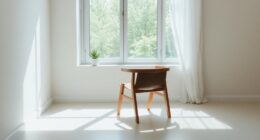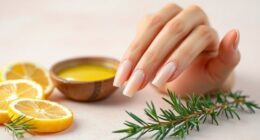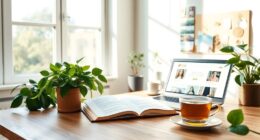To build a fashion mood board, start by defining your purpose. Decide what you want to convey, whether it's a clothing line or a seasonal vibe. Next, gather visual inspiration from various sources like fashion magazines, social media, and nature. Choose a medium that suits your style—go for a physical board with magazine clippings or a digital one for easy editing. Arrange your materials thoughtfully, keeping balance and clarity in mind. Finally, use your mood board as a communication tool to align your team and inspire creativity. There's so much more to explore about perfecting your vision.
Key Takeaways
- Define the objective of your mood board to establish a focused theme and direction for your fashion project.
- Gather diverse visual inspirations from magazines, social media, and other sources to enrich your design ideas.
- Choose between a physical or digital mood board based on your creative process and collaborative needs.
- Design a balanced layout that emphasizes key images, color palettes, and materials to effectively convey your vision.
- Use the mood board as a communication tool to align your team and maintain consistency throughout the design process.
Determining Your Mood Board Purpose
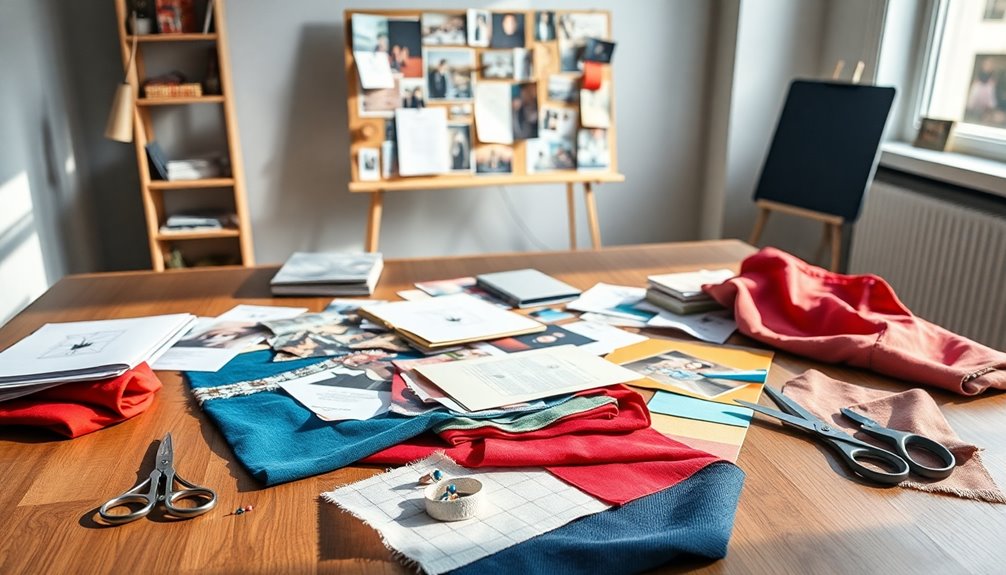
When you're creating a fashion mood board, the first step is to determine its purpose. Ask yourself what you want to achieve. Are you developing a specific clothing line, capturing a seasonal vibe, or conceptualizing a photoshoot? Knowing your objective helps you stay focused.
Next, identify your target audience. Who'll view the mood board? It could be clients, team members, or collaborators. Understanding your audience informs your design choices and helps communicate your vision effectively.
Consider how you'll be using the mood board. Is it for concept development, communication, or marketing? This will influence its layout and content. Decide if it'll be a literal representation with exact colors and materials or more inspirational, setting a vibe instead. Fashion mood boards are essential for designers as they help convey creative visions and organize thoughts.
Lastly, think about the thematic focus. Will it revolve around a specific color, style, or emotion? Narrowing down your ideas helps guide the overall aesthetic, ensuring it aligns with your brand values and current trends.
Collecting Visual Inspiration
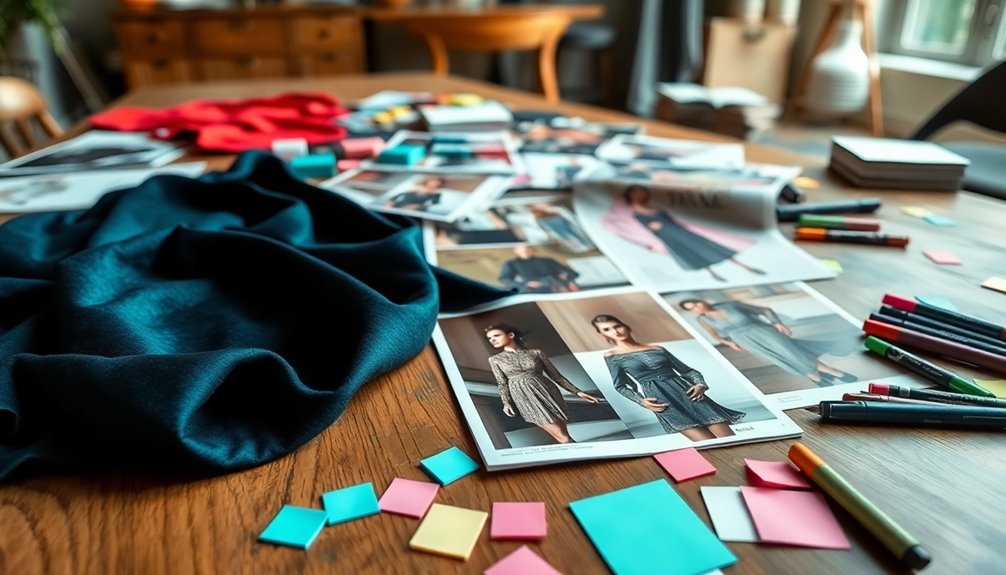
Collecting visual inspiration is a crucial step in crafting an effective fashion mood board. Start by identifying sources that resonate with your vision. Check out fashion and lifestyle magazines like Vogue or Elle for high-quality images, and explore online stock photography sites such as Unsplash or Getty Images for diverse visuals.
Social media platforms like Instagram and Pinterest are treasure troves for trending styles, while fashion brand websites and lookbooks can provide insights into current collections.
Gather a variety of visual elements that reflect your concept. Look for photographs and illustrations, and don't forget to include tactile materials like fabric swatches and color samples. Pay attention to details such as garment features and accessories, and draw inspiration from art, architecture, and nature. Additionally, creating a fashion mood board serves as a visual reference that keeps your design direction focused throughout the process.
Utilizing digital tools can streamline this process. Platforms like Pinterest allow you to collect and organize inspiration efficiently. Consider online mood board creators like Canva or Milanote to visualize your ideas.
As you gather these elements, focus on incorporating textures, patterns, and colors that enhance your theme, ensuring your mood board is rich and engaging.
Choosing the Right Medium
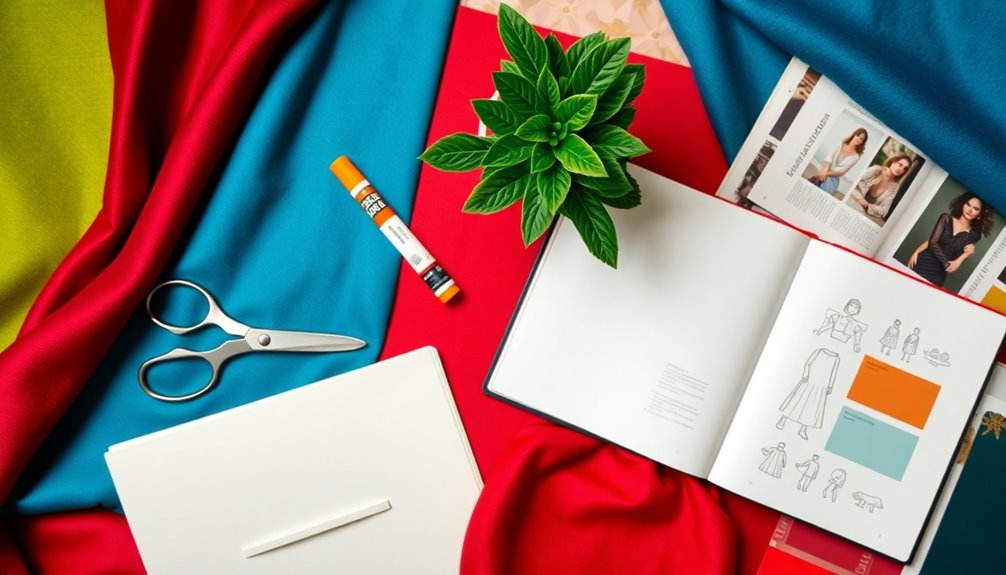
Selecting the right medium for your fashion mood board is essential to effectively communicate your vision. You have a few options to consider: physical, digital, or a hybrid approach.
If you prefer a hands-on experience, a physical mood board might be your best bet. You can use magazine clippings, fabric swatches, and printed images on corkboards or poster boards. This tactile method allows you to arrange and rearrange elements easily, providing a sensory experience with different textures. Additionally, a physical mood board helps in capturing and communicating the overall look and feel of your project.
However, keep in mind that updating or sharing this type of board can be time-consuming.
On the other hand, digital mood boards offer flexibility and convenience. Utilizing software like Photoshop or platforms like Pinterest allows for easy editing and sharing with team members. You can access and update your board from anywhere, making it ideal for collaboration.
If you want the benefits of both worlds, consider a hybrid approach. By scanning physical elements or taking pictures, you can create a digital board that combines tactile and digital elements.
This method allows for easy transitions and detailed annotations, enhancing your creative process. Choose the medium that best aligns with your workflow and vision.
Crafting Your Mood Board
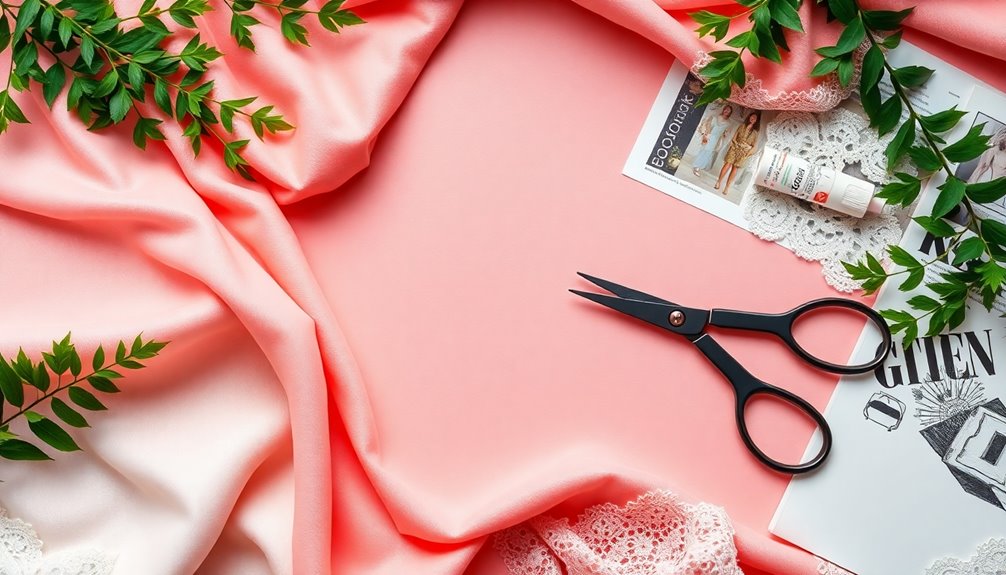
Crafting a fashion mood board involves a careful blend of creativity and intention. First, determine your board's objective—what do you want to convey? Choose a theme that resonates with you, whether it's a color, style, season, or emotion. Keep your ideas focused to maintain consistency and draw inspiration from personal experiences or travels.
Next, gather your materials. Collect images from magazines, books, and online platforms like Pinterest. Don't forget to explore social media and visit galleries or shops for additional visual references. Incorporate physical materials like fabrics or accessories to add texture and depth. Utilizing social media research can significantly enhance your inspiration collection process.
Once you've collected your inspiration, start designing the layout. Consider composition and visual balance; larger images should highlight key elements, while grouping related pictures strengthens impact. Layer images, colors, and materials to enhance your design.
Finally, add details and finishing touches. Include a color palette and swatches to ensure consistency. Incorporate text to clarify your theme and mood, and use lifestyle images for context. Make sure every element on your board has a clear purpose, guiding viewers through your creative vision. For the finishing touches, I will add in swatches of the color palette I’ve chosen, which includes soft pastels and earthy tones to create a calming and inviting atmosphere. I will also incorporate lifestyle images of cozy reading nooks and beautiful landscapes to convey the theme and mood of relaxation and peace. Every element on the board, from the color palette to the images, will tie together to create a cohesive and inspiring vision for a serene space. In addition, I will include text that emphasizes the importance of self-care and creating a nurturing environment for oneself. The phrase ‘style essentials for every girl‘ will be featured prominently to convey the message of empowerment and self-expression through personal style.
Effectively Utilizing Your Mood Board
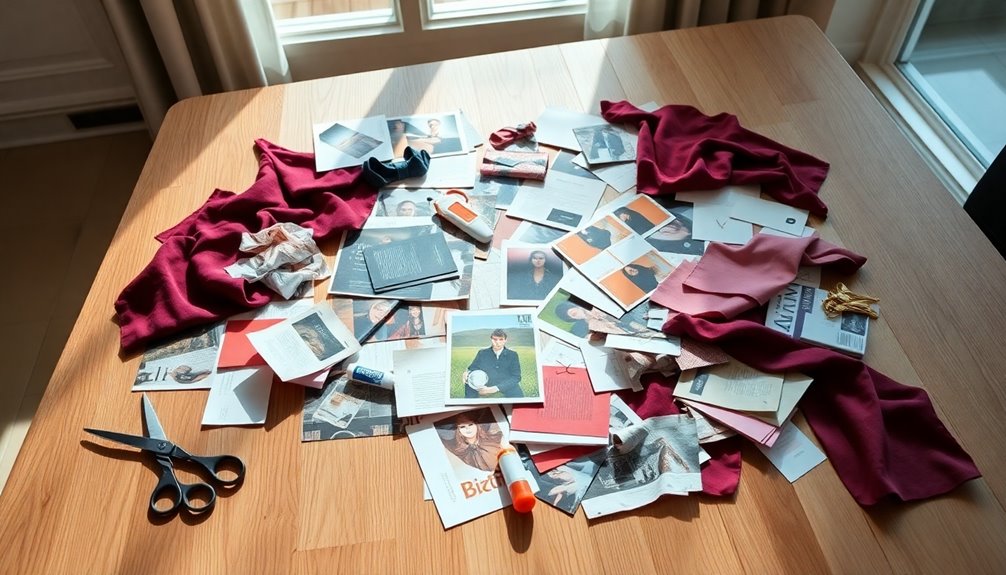
Once you've crafted your mood board, it's time to put it to good use. Start by using it as a clear communication tool. This visual foundation helps you, your team, and clients align on the desired aesthetic, minimizing misunderstandings and fostering trust.
It's essential that everyone is on the same page about the project's vision and goals.
Next, lean on your mood board for consistency in design direction. It serves as a reference point, ensuring your collection maintains a cohesive look and feel. By establishing this visual guide early on, you'll save time and reduce the need for revisions. Mood boards also help reconcile contradicting ideas among creative teams.
Additionally, a well-utilized mood board enhances time and resource efficiency. It streamlines your creative process, allowing you to focus on crafting the best product without getting bogged down by unnecessary changes.
Finally, don't forget about the creative inspiration it offers. When you hit a roadblock, refer back to your board to rekindle your flow state.
Frequently Asked Questions
How Do I Know When My Mood Board Is Complete?
You'll know your mood board is complete when it clearly conveys the intended theme and mood.
Check for consistency and ensure all elements align with your purpose. If everything feels cohesive and visually appealing, that's a good sign!
Don't hesitate to make adjustments if something feels off.
Lastly, if you can easily explain your choices and they're aligned with your target audience, you're likely ready to call it finished.
Can I Include Digital Art in My Mood Board?
Absolutely, you can include digital art in your mood board! It enhances your visual storytelling by offering flexibility and a range of creative options.
You can layer images, use color editing, and even add text to highlight your theme. Plus, digital art allows for easy rearranging and sharing with others.
What Should I Do if My Mood Board Feels Cluttered?
If your mood board feels cluttered, start by simplifying your elements. Remove anything that doesn't resonate with your main theme.
Focus on balancing colors, textures, and patterns to create visual harmony. Use size to emphasize key images while grouping similar elements for impact.
Layer strategically, ensuring the main message shines through. Finally, step back and assess the overall flow, making adjustments until it feels cohesive and inviting to the eye.
How Often Should I Update My Mood Board?
You should update your mood board regularly to keep it fresh and relevant.
Consider revamping it with each season to reflect new trends, or after completing a project to incorporate insights you've gained.
Whenever your personal style or project goals change, take the time to adjust your board.
Regular updates not only keep your inspiration alive but also ensure your creative direction aligns with the latest developments in fashion.
Can I Use My Mood Board for Multiple Projects?
Absolutely, you can use your mood board for multiple projects! It's versatile enough to adapt to different themes or styles.
You can focus on various sections for different aspects of your projects, ensuring a cohesive aesthetic. Plus, you can easily customize and update it to fit each new endeavor.
This way, you'll maintain a consistent creative direction while inspiring fresh ideas across all your projects.
Conclusion
Now that you've learned how to build your fashion mood board, it's time to unleash your creativity! By determining your purpose, collecting inspiration, and choosing the right medium, you can craft a board that truly reflects your vision. Remember, your mood board isn't just for show; it's a powerful tool to guide your design process and spark new ideas. So get started, and let your imagination take flight!
